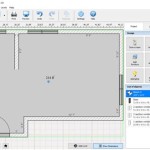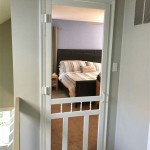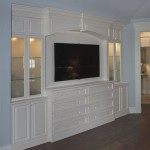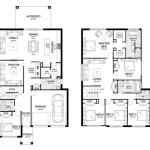Master Bedroom Closet Organization Ideas
The master bedroom closet, often the largest closet in a home, can quickly become a repository for clothing, shoes, and accessories, potentially devolving into a disorganized and overwhelming space. Effective organization is essential to maintaining a functional and aesthetically pleasing master bedroom. Proper closet organization not only maximizes storage space but also streamlines the daily routine of selecting outfits and accessories, ultimately contributing to a more relaxed and efficient lifestyle. This article explores various master bedroom closet organization ideas, focusing on strategies and techniques to optimize space and maintain order.
Before embarking on any organizational project, a thorough assessment of the closet's current state is imperative. This involves removing all items from the closet – clothing, shoes, accessories, and any miscellaneous items that may have accumulated over time. Once the closet is empty, a cleaning process should be undertaken, including vacuuming the floor, wiping down shelves and rods, and addressing any dust or debris buildup. This pre-organization cleaning establishes a clean slate and allows for a more accurate evaluation of the space available.
Following the cleaning process, a comprehensive inventory of the items that will be returned to the closet must be conducted. This inventory should involve a critical appraisal of each item, considering its frequency of use, condition, and sentimental value. The elimination of unnecessary or unwanted items is a crucial step in decluttering and optimizing closet space. Items that are no longer worn, are damaged beyond repair, or simply no longer fit should be donated, sold, or discarded responsibly. This process of selective reduction is foundational to achieving a well-organized master bedroom closet.
Once the decluttering process is complete, the remaining items can be categorized based on type, season, or function. Common categories include shirts, pants, dresses, skirts, outerwear, shoes, accessories (belts, scarves, ties), and undergarments. Within each category, further subcategorization can be implemented based on color, style, or occasion. For example, shirts can be further divided into short-sleeved, long-sleeved, casual, and formal. This structured categorization facilitates easy retrieval and storage of items.
With the items categorized, the next step involves strategically planning the layout of the closet. This involves considering the available space, the types of items being stored, and the individual's lifestyle and preferences. Effective closet design maximizes vertical space and utilizes available shelving, drawers, and hanging rods in a way that promotes accessibility and organization.
Maximizing Vertical Space
Vertical space is often underutilized in closets. Utilizing the height of the closet effectively can significantly increase storage capacity. Shelving units, both adjustable and fixed, are essential for maximizing vertical space. These shelves can be used to store folded clothing, shoes, handbags, or other accessories. The height between shelves should be adjusted to accommodate the specific items being stored, preventing wasted space.
Another effective strategy for maximizing vertical space is the installation of double hanging rods. Double hanging rods essentially create two levels of hanging space, allowing for the storage of shirts, blouses, skirts, and pants on separate tiers. This is particularly useful for closets with high ceilings. For closets with standard ceiling heights, adjustable height rods can be installed to accommodate different lengths of clothing.
Over-the-door organizers are a versatile and space-saving option for storing shoes, accessories, or small items. These organizers typically consist of multiple pockets or compartments that can be hung over the closet door, providing easily accessible storage without taking up valuable shelf or floor space. They are especially useful for storing shoes, scarves, belts, or jewelry.
Tall, narrow shelving units can be strategically placed in corners or along side walls to maximize storage potential. These units can be used to store folded clothing, books, decorative items, or any other items that require vertical storage. Opting for units that extend to the ceiling maximizes the use of otherwise wasted vertical space.
Optimizing Hanging Space
The way clothes are hung in a closet can significantly impact its overall organization and appearance. Using consistent hangers is crucial for creating a uniform and visually appealing closet. Thin, space-saving hangers, such as velvet hangers, are particularly effective for maximizing hanging space while minimizing bulk. These hangers also prevent clothes from slipping off, further contributing to a neater appearance.
Clothing should be organized by type and then by color within each type. This system facilitates easy retrieval of specific items and contributes to a visually appealing and organized closet. For example, shirts should be grouped together, then organized by color, progressing from light to dark shades. This makes it easier to find a specific shirt and also helps to maintain a sense of order.
Consider the length of different garments when organizing hanging space. Longer items, such as dresses and coats, should be hung in areas with ample vertical space to prevent them from dragging on the floor. Shorter items, such as shirts and skirts, can be hung above drawers or shelves to maximize the space below. This strategic allocation of hanging space ensures that all areas of the closet are utilized efficiently.
Investing in specialized hangers, such as skirt hangers, pant hangers, and suit hangers, can enhance organization and protect clothing. Skirt hangers typically have clips that securely hold skirts and pants without creasing them. Pant hangers can be designed to hang multiple pairs of pants, maximizing space. Suit hangers are designed to maintain the shape of suits and prevent them from wrinkling.
Effective Storage Solutions
Drawers are an essential component of closet organization, providing concealed storage for items such as underwear, socks, and folded clothing. Built-in drawers can be incorporated into custom closet systems, while freestanding drawer units can be added to existing closets to increase storage capacity. The depth and size of drawers should be carefully considered to accommodate the specific items being stored.
Baskets and bins are versatile storage solutions for organizing various items in the closet. They can be used to store accessories, linens, or seasonal clothing. Woven baskets add a touch of texture and visual appeal, while clear plastic bins allow for easy identification of contents. Baskets and bins can be placed on shelves, on the floor, or inside drawers to maximize storage space.
Shoe storage is an important aspect of closet organization. Shoe racks, shoe shelves, and shoe boxes are all viable options for storing shoes in an organized manner. Shoe racks and shelves allow for easy visibility and access, while shoe boxes protect shoes from dust and damage. Consider using clear shoe boxes for easy identification of the contents. Shoes should be organized by type, color, or occasion to facilitate easy retrieval.
Accessories, such as belts, scarves, ties, and jewelry, require dedicated storage solutions to prevent clutter and ensure easy access. Belt racks, scarf organizers, and tie racks can be used to hang these items neatly. Jewelry organizers, such as jewelry boxes or hanging jewelry organizers, provide separate compartments for storing different types of jewelry and preventing tangling.
Lighting is an often-overlooked aspect of closet organization. Adequate lighting is essential for visibility and for making it easier to find items in the closet. Install LED strip lights or spotlights to illuminate dark corners and shelves. Consider motion-sensor lights that automatically turn on when the closet door is opened, providing convenient and energy-efficient lighting.
Mirrors are a functional and decorative addition to any closet. A full-length mirror allows for easy outfit assessment, while smaller mirrors can be used for applying makeup or styling hair. Consider installing a mirror on the closet door or on an adjacent wall to maximize space and enhance the functionality of the closet.
Labels are essential for maintaining order and ensuring that items are returned to their designated locations. Label shelves, drawers, bins, and baskets with clear and concise labels indicating their contents. This will help to prevent clutter and make it easier to find items in the future. Use a label maker or pre-printed labels for a professional and consistent look.
The implementation of these master bedroom closet organization ideas, combined with a commitment to regular maintenance and decluttering, will create a functional, aesthetically pleasing, and efficient space. By maximizing vertical space, optimizing hanging space, and implementing effective storage solutions, the master bedroom closet can be transformed from a source of frustration into a well-organized and enjoyable area.

Master Bedroom Closet Organizing Tips

Walk In Closet Ideas The Home

5 Best Closet Storage Ideas For The Master Bedroom Superior Closets

Master Bedroom Customclosetmaid

Walk In Closet Makeover Tips For Maximizing Storage Lemon Thistle

9 Closet Renovation Ideas To Nix Clutter Add Calm Sweeten Com

Custom Bedroom Closet Organization Ideas Simple Purposeful Living

Small Walk In Closet Organization Ideas

Easy Diy Closet Organizing Ideas Sanctuary Home Decor

11 Top Walk In Closet Design Ideas For Your Master Bedroom








